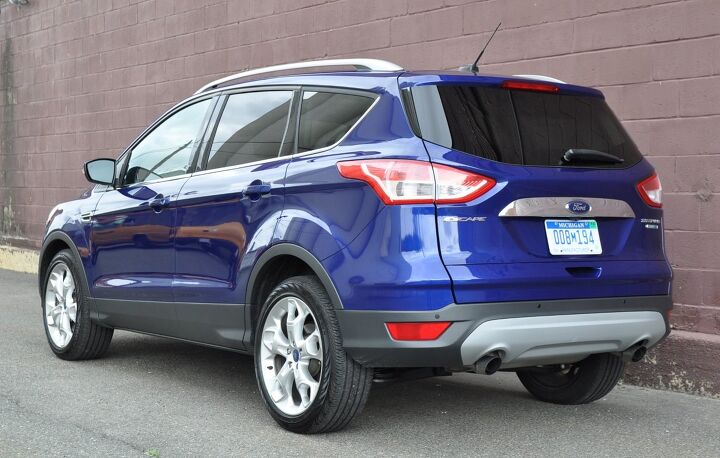Another Ford Recall: Seats, Seatbelts Could Give Way

No automaker remains immune from safety recalls, but Ford Motor Company has had a bad go if it, as the British would say. The latest recall, spanning four models, concerns roughly 117,000 vehicles with potentially faulty anchors for the seats, seatbacks and seatbelts — all things you’d want to work properly in the event of a crash.
The automaker, which recently saw a slew of recalls munch heartily on its corporate profits, claims improperly tempered attachment bolts could cause any of the components to give way during a crash, or even a sudden stop.
While no injuries have been reported from the defective bolts, Ford claims “the structural integrity of the seat or the seatbelt system’s performance may be compromised in a sudden stop or crash, increasing the risk of injury.” As such, it’s calling back four models built between May and June of 2014.
The models include the 2014 Ford F-150, 2014 E-Series van, 2014-2015 Escape, and 2015 Lincoln MKC. As expected, dealers will replace the vehicles’ bad bolts free of charge. Of the total number of North American vehicles flagged for this problem, 94,605 were sold in the U.S. and its territories, with 20,681 sent to Canada and another 1,510 to Mexico.
Ford hasn’t been able to shake a growing list of recalls, with faulty door latches, engine fires, and fragile suspension components exerting pressure on the company’s balance sheet. In the first quarter of 2017, sudden warranty costs stripped $467 million from the automaker’s profits, which sank 35 percent, spooking investors and giving head office more reason to boot former CEO Mark Fields.
The company’s second-quarter performance was a bit rosier. While pretax profit dropped by half a billion dollars, a lower tax rate meant net earnings stayed flat, at $2 billion. This prompted analysts to raise the company’s full-year earnings forecast to a range from $1.65 to $1.85 per share. After years of steady declines, Ford will likely rejoice over any upward direction. Its stock closed the day at $1.18.
[Source: CNBC]

More by Steph Willems
Latest Car Reviews
Read moreLatest Product Reviews
Read moreRecent Comments
- Dave M. IMO this was the last of the solidly built MBs. Yes, they had the environmentally friendly disintegrating wiring harness, but besides that the mechanicals are pretty solid. I just bought my "forever" car (last new daily driver that'll ease me into retirement), but a 2015-16 E Class sedan is on my bucket list for future purchase. Beautiful design....
- Rochester After years of self-driving being in the news, I still don't understand the psychology behind it. Not only don't I want this, but I find the idea absurd.
- Douglas This timeframe of Mercedes has the self-disintegrating engine wiring harness. Not just the W124, but all of them from the early 90's. Only way to properly fix it is to replace it, which I understand to be difficult to find a new one/do it/pay for. Maybe others have actual experience with doing so and can give better hope. On top of that, it's a NH car with "a little bit of rust", which means to about anyone else in the USA it is probably the rustiest W124 they have ever seen. This is probably a $3000 car on a good day.
- Formula m How many Hyundai and Kia’s do not have the original engine block it left the factory with 10yrs prior?
- 1995 SC I will say that year 29 has been a little spendy on my car (Motor Mounts, Injectors and a Supercharger Service since it had to come off for the injectors, ABS Pump and the tool to cycle the valves to bleed the system, Front Calipers, rear pinion seal, transmission service with a new pan that has a drain, a gaggle of capacitors to fix the ride control module and a replacement amplifier for the stereo. Still needs an exhaust manifold gasket. The front end got serviced in year 28. On the plus side blank cassettes are increasingly easy to find so I have a solid collection of 90 minute playlists.


































Comments
Join the conversation
I'm thinking I better buy up a bunch of Ford stocks. It's a steal at $1.18!
Now there is a carbon monoxide probe for Explorers: http://fortune.com/2017/07/28/nhtsa-ford-explorer-probe/